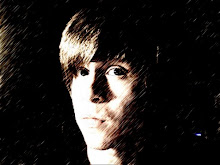Typographic Rules and Terms
Wednesday, November 19, 2008
Margin: The typically inactive spatial area on a grid that defines the active area of the composition space and directs the viewer towards the visual elements.
Column: A vertical division of space on a grid that is used to align the visual elements.
Alley: The blank space in between two columns of text.
Module: Spacial areas which aid in arranging visual aspects.
Gutter: The inside margin or blank space between two facing pages of a book.
Folio: The page number.
What are the advantages of a multiple column grid?
A multiple column grid can be used to divide the grid into intervals, giving more options and possibilities to the design. The columns are adjustable and pliable to the overall design of the layout and helps to create a more purposeful interaction of visual components.
Why is there only one space after a period?
Back when the world used typewriters, letters took up the same amount of space. Thus, it was necessary to put two spaces after each period. Now that letters are proportional to their size, this is no longer necessary.
Character: Any letter, symbol, mark, or sign.
How many characters are optimal for a line of length?: Between 45 and 65.
Why is a baseline grid used in design?:
Baseline grids maintain continuity across the pages of a design. If all texts sits on a baseline, then it the space between lines and the margins are equal or at least proportional.
Typographic River:
A typical occurrence in justified blocks of text when the separation of the words leaves gaps of white space in several lines. These white spaces align throughout the lines of text, dividing it visually.
How can you use white space in your designs?:
I can use it to frame or shape the text accordingly. It draws the viewers eye across the page to the more complex and interesting parts.
What does type color/texture mean?:
Depending on the font, size and leading of a block of text, it makes a color and texture on the page as a visual element rather than information.
Clotheslining: I have absolutely no idea what this is.
Flowline: Horizontal intervals that separate columns of a grid to create alignment throughout the page.
Hangline: The line at the top of a layout that indicates that no text should be placed above it.
X-Height: The height of a lowercase "x." It is different for every font, but helps to keep all the characters proportional to each other. It affects type color by making it look visually thicker.
Tracking: The space between lines of text.
Kerning: The space in between letters in a line of text. Characters need to be kerned in order to create uniform letter spacing throughout a section of text. Characters that are generally kerned are: pairs with parallel horizontal elements (i.e. IL), pairs that involve a vertical next to a curve (i.e. DH), curve-to-curve pairs (i.e. DO), a curve next to the letter T (i.e. TC), letters surrounded with a lot of white space (i.e. AT).
In justification or H&J terms, what do the numbers minimum, optimum and maximum mean?:
When justifying blocks of text, the computer must decide how to adjust the space between the letters and words. These terms mean the minimum, maximum and optimum amount of space used to justify this text without making it look disjointed and aesthetically displeasing.
What is the optimum space between words?:
One "en" space is generally used as the optimum space between words.
What are some ways to indicate a new paragraph? Are there any rules?:
It is generally accepted that an indentation of text on the first line indicates a new paragraph. While a common misconception is that one tab keystroke will suffice for indentation, the rule is that you should use two "em" spaces for an indentation standard.
Ligature: When two characters are combined to form one unified character.
CMYK: Cyan Magenta Yellow BlacK
RGB: Red Green Blue
Hanging Punctuation: In justified text, the punctuation is sometimes allowed to extend into the right-hand margin area to make the margin look neater. This is called hanging punctuation.
Primes: Straight upside down teardrop characters that are used to indicate feet and inches, minutes and seconds.
Quotation Marks: Curved teardrop shaped characters that indicate quotes and apostrophes, enclosing the text within them.
Hyphen: 1/3rd of an em dash. Used to connect words, break syllables, to connect two broken parts of a word when reading justified text.
En Dash: Half of an em dash, relative to the type face. Used to indicate a range between to preceding and following words, or to substitute the word "to."
Em Dash: The size of a capital "M," relative to the type face. Substituted for brackets or parenthesis, indicates a sudden change of thought or thought patterns, or to indicate a rest less strong than a period, but stronger than a comma.
Widow: A lone word at the end of a paragraph that has a line all to itself.
Orphan: The final one or two lines of a paragraph separated from the main paragraph to form a new column, usually by a page or column break.
Subscribe to:
Post Comments (Atom)

No comments:
Post a Comment